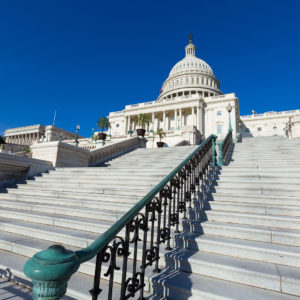Senate Republicans unveiled a second-edition Better Care Reconciliation Act (“BCRA2”) to modify the Affordable Care Act, but a handful of GOP senators quickly killed it. The biggest innovation — two separate individual markets — still warrants a postmortem because the idea is likely to resurface — in which case, this article becomes a premortem.
Sens. Ted Cruz, R-Texas, and Mike Lee, R-Utah, originated the dual-market concept, though Lee ultimately helped kill BCRA2. The bill would have allowed insurers to sell insurance that didn’t comply with ACA individual-market requirements, including guaranteed issue (must sell policies to anyone), modified community rating (no higher premiums for sick people), and Essential Health Benefits (medical conditions every plan must cover). Non-compliant plans would be allowable only where compliant plans were also available.
Democrats argued this two-segment configuration would initiate a market death spiral in the compliant segment, with healthy people gravitating toward low-cost noncompliant policies and sicker people limited to high-cost compliant policies (and rising premiums forcing some to drop coverage). Republicans countered that the ACA’s individual market is already in a death spiral. Both parties’ fears were plausible, but uncertain, with outcomes dependent on a complex dance of insurers, potential enrollees, and state and federal governments.
The ACA forces healthy individual-market enrollees to subsidize sicker people’s policies, leading some healthy people to decline coverage. (Hence the Republicans’ assertion that an ACA death spiral is already underway.) BCRA2 would have shifted the financing burden onto taxpayers, by amplifying two ACA mechanisms — premium subsidies for consumers and a stabilization fund for insurers. In this way, the compliant market would have resembled state high-risk pools that Republicans have long advocated.
What might have happened?
States could have rejected the dual-market option, leaving only compliant policies available and Democrats’ fears unrealized.
States might have restricted the features of noncompliant policies enough to minimize the distinctions between the two markets or frustrate the ability of insurers to separate cleanly healthy and sick enrollees, effectively maintaining the ACA’s strictures.
The federal government could have subsidized the compliant segment enough to render coverage affordable for those with pre-existing conditions. Democrats correctly note that state high-risk pools were notoriously underfunded, stranding many without coverage. Republicans argue similarly that Democrats overestimate the government’s ability to force young and healthy people to subsidize sicker people. Both parties display unwarranted certainty that their chosen mechanisms will adequately finance comprehensive coverage to all with pre-existing conditions.
Perhaps BCRA2’s most serious complication was that the compliant market would itself split into two distinct groups. In the compliant market, premium subsidies would have partly shielded those with incomes below 350 percent of the Federal Poverty Level — but not those above that line — from premium increases. Both the higher- and lower-income groups would have been subsidized by a “stabilization fund” (“bailout,” some say) compensating insurers for remaining in otherwise unprofitable markets.
BCRA2’s outcome would have depended heavily on the characteristics and vagaries of consumers. How many people have pre-existing conditions that make it difficult for them to obtain coverage without heavy subsidies? Most likely, Republicans grossly underestimate and Democrats grossly overestimate the number. The actual number can also vary with regulatory whim. And beyond that, it’s notoriously difficult to predict consumers’ responses to prices and taste for risk. Congressional Budget Office estimates of ACA enrollment, for example, have been woefully inaccurate, and its much-cited estimates of BCRA2 rested on indefensible assumptions.
The segmented market’s viability would have depended on the federal government’s willingness to finance ACA-compliant coverage for those with pre-existing conditions. Under current wording, the stabilization fund is temporary and, perhaps, modest in size. But of course, the federal government’s temporary obligations often grow and become permanent. Expansive funding might have stabilized the compliant market. Skimpy funding could have desiccated it, driving sicker people into the noncompliant market or out of coverage altogether.
Moving from ACA to ACA+BCRA2 would have been a leap from one great unknown to another. Given the limited and uncertain generosity of healthy insurance purchasers and taxpayers, the same is likely to be true of other attempts to tie up neatly the pre-existing conditions problem — especially if guaranteed issue, modified community rating, and extensive benefit mandates pertain to part of the market.

